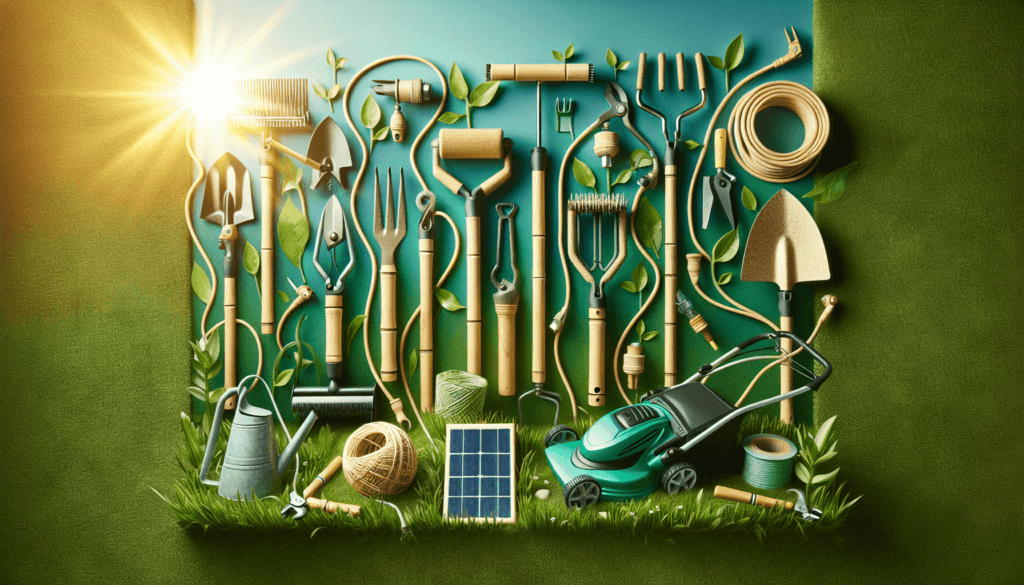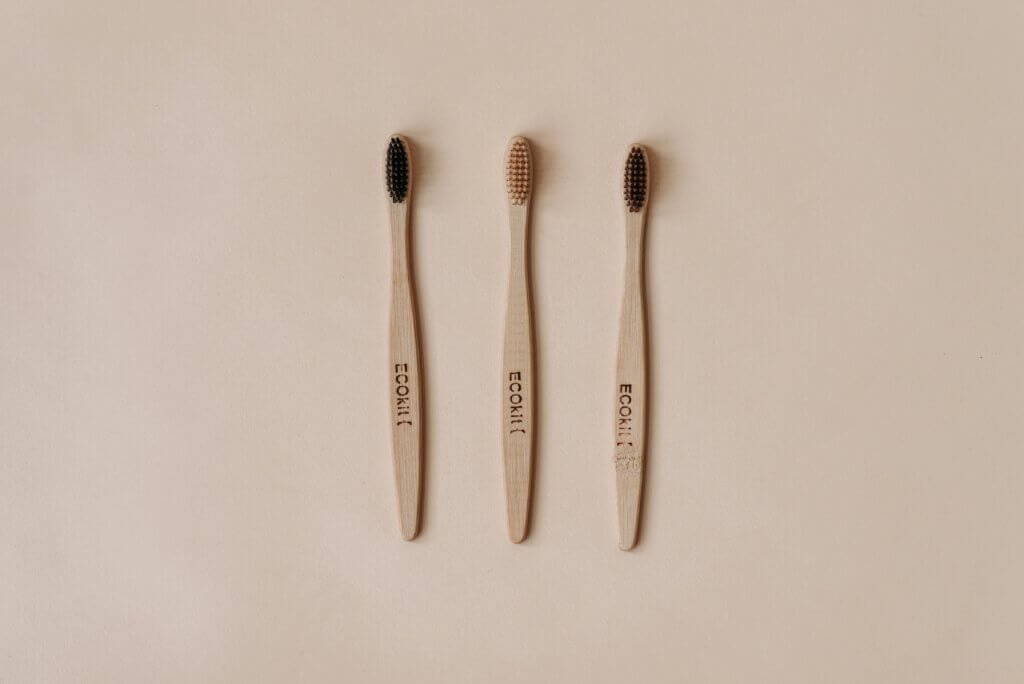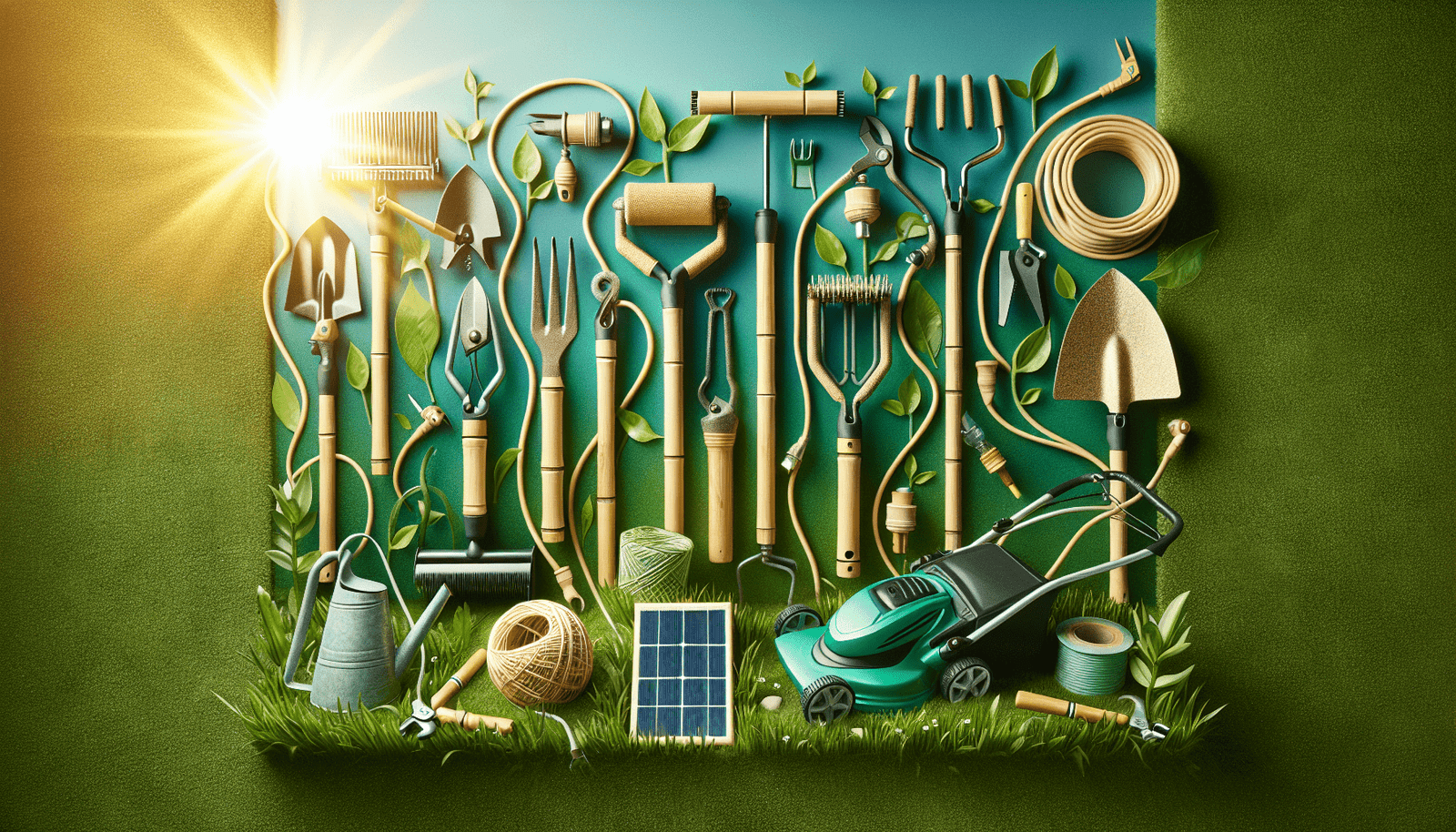Are you an environmentally conscious gardener looking to make more sustainable choices? If so, then this article is for you! “Choosing Eco-Friendly Garden Tools and Equipment” delves into the importance of selecting eco-friendly tools and equipment for your gardening needs. Discover how these environmentally-conscious options can make a positive impact on both your garden and the planet. From hand tools made from sustainable materials to energy-efficient equipment, this article provides practical tips and insights to help you create a greener garden.

Researching Eco-Friendly Options
Understanding the Environmental Impact of Garden Tools
When it comes to selecting garden tools, it is important to consider their environmental impact. Some tools may contribute to pollution and resource depletion, while others can be more sustainable choices. By understanding the environmental impact of different garden tools, you can make informed decisions that align with your eco-friendly values.
Researching Sustainable Materials
One key aspect of eco-friendly garden tools is the materials used in their production. Look for tools made from sustainable materials such as bamboo, which grows quickly and regenerates easily. Tools made from recycled or upcycled materials are also environmentally friendly choices. By researching the materials used in garden tools, you can ensure that you are making sustainable choices.
Finding Reviews and Recommendations
Before purchasing eco-friendly garden tools, it can be helpful to read reviews and recommendations from other gardeners. Look for reputable sources such as gardening websites, forums, and magazines to gather information about the performance and durability of different tools. By considering the experiences of others, you can make more informed decisions about which eco-friendly tools to invest in.
Considering the Durability and Longevity of Products
One important factor to consider when researching eco-friendly garden tools is their durability and longevity. Investing in high-quality tools that are built to last can reduce the need for frequent replacements, ultimately reducing waste. Look for tools that are constructed with strong materials and solid craftsmanship, ensuring that they can withstand the rigors of regular use. By choosing durable tools, you can minimize your environmental impact over time.
Opting for Hand Tools
Benefits of Hand Tools for the Environment
Hand tools have several environmental benefits compared to their power tool counterparts. They don’t require electricity or fuel, reducing energy consumption and greenhouse gas emissions. Additionally, hand tools typically have fewer moving parts, resulting in less waste and potential for breakdown or malfunctions. By opting for hand tools, you can reduce your carbon footprint while still effectively tending to your garden.
Types of Hand Tools to Consider
There is a wide variety of hand tools available for different gardening tasks. Some essential hand tools include pruners, trowels, gardening gloves, hand cultivators, and shears. These tools allow for precise and controlled work, making them ideal for tasks like planting, pruning, and maintaining flower beds. Consider your specific gardening needs and select hand tools that will help you accomplish your tasks efficiently.
Exploring Ergonomic Designs
To make gardening more comfortable and enjoyable, consider hand tools with ergonomic designs. These tools are specifically designed to minimize strain and injury, ensuring that you can work in the garden for longer periods without discomfort. Look for features such as padded handles, adjustable angles, and lightweight construction. Ergonomic hand tools can make a significant difference in your gardening experience while caring for the environment.
Choosing High-Quality Hand Tools
When opting for hand tools, it is crucial to select high-quality options that will stand the test of time. Look for tools made from durable materials such as stainless steel or forged carbon steel. These materials are resistant to rust and offer excellent strength and longevity. Additionally, consider brands with a reputation for producing reliable hand tools. Investing in high-quality hand tools will result in a more sustainable and satisfying gardening experience.
Selecting Battery-powered Tools
Advantages of Battery-powered Tools
Battery-powered tools offer a middle ground between hand tools and their more powerful counterparts. They bring the convenience of power tools without the emissions and noise associated with gasoline-powered equipment. Battery-powered tools are typically quieter, emit zero greenhouse gases during use, and do not require a cord, providing greater mobility in the garden. These tools are an excellent option for those who require more power than hand tools but still want to prioritize the environment.
Examining Different Types of Battery-powered Tools
Battery-powered tools encompass a wide range of gardening equipment, including lawnmowers, hedge trimmers, leaf blowers, and chainsaws, among others. Each type of tool serves a specific purpose and caters to different gardening needs. Consider the tasks you regularly perform in your garden and select the battery-powered tools that will best fulfill your requirements. By choosing the right tools, you can achieve both efficiency and eco-friendliness.
Comparing Battery Technologies
When considering battery-powered tools, it is essential to evaluate the different battery technologies available. Lithium-ion batteries are commonly used in modern garden tools due to their high energy density, longer runtimes, and lighter weight. They also have no memory effect, meaning they can be recharged at any time without affecting their capacity. Other battery technologies include nickel-cadmium (NiCd) and nickel-metal hydride (NiMH), but these are less common in newer garden tool models.
Considering the Battery Life and Charging Method
Battery life and charging method are crucial factors to consider when selecting battery-powered tools. Look for tools with longer battery life to minimize the need for frequent recharges. Additionally, consider the charging method – some tools come with fast chargers that can recharge the battery quickly, while others may require overnight charging. By selecting tools with efficient battery life and convenient charging methods, you can maximize their usability while minimizing environmental impact.
Exploring Solar-powered Tools
Benefits of Solar-powered Tools
Solar-powered tools are an eco-friendly alternative to traditional power tools. By harnessing energy from the sun, these tools eliminate the need for electricity or fuel, reducing both energy consumption and greenhouse gas emissions. Solar-powered tools offer the convenience of power tools while operating silently and emitting zero emissions during use. By utilizing clean and renewable energy, you can contribute to a more sustainable gardening practice.
Types of Solar-powered Tools Available
Solar power can be used to operate a variety of garden tools, including solar-powered lights, water features, and even lawn mowers. Solar garden lights are a popular choice for illuminating outdoor spaces without electricity, as they store energy during the day and provide light at night. Additionally, solar-powered water features can add a tranquil ambiance to your garden while conserving energy. Explore the range of solar-powered tools available and harness the power of the sun for your gardening needs.
Understanding the Limitations and Considerations
While solar-powered tools offer numerous benefits, it is essential to consider their limitations and specific requirements. These tools rely on sunlight to generate power, which means their effectiveness may be affected by shaded or overcast conditions. Before investing in solar-powered tools, evaluate the sunlight exposure in your garden to ensure optimal performance. Additionally, some solar-powered tools may have limited runtimes or may not be suitable for heavy-duty tasks. Understanding these considerations will help you make informed decisions about incorporating solar power into your gardening routine.
Ensuring Sufficient Sunlight for Optimal Performance
To maximize the performance of solar-powered tools, it is crucial to ensure that they receive sufficient sunlight. Place solar lights in areas that receive direct sunlight during the day to ensure optimal charging. Likewise, position solar water features where they can absorb sunlight effectively to power the pump. By strategically placing solar-powered tools in areas with ample sunlight, you can fully utilize their eco-friendly capabilities.

Considering Manual and Mechanical Alternatives
Introduction to Manual and Mechanical Tools
Manual and mechanical tools offer another eco-friendly option for maintaining your garden. These tools require physical effort but often eliminate the need for electricity or fuel. Regular use of manual and mechanical tools can provide exercise, reduce noise pollution, and minimize carbon emissions. By incorporating these tools into your gardening routine, you can contribute to a more sustainable and health-conscious approach.
Exploring Reel Mowers for Lawn Maintenance
Reel mowers are an excellent alternative to gas-powered lawn mowers. These manual tools consist of a rotating cylinder with multiple blades that cut the grass as you push it forward. Reel mowers produce no emissions, operate silently, and promote healthier grass growth by cutting the blades cleanly. While they require more effort and may not be suitable for large lawns, reel mowers offer an eco-friendly solution for maintaining smaller yard spaces.
Considering Push-type Spreaders for Fertilizers
Push-type spreaders are manual tools used for distributing fertilizers, seeds, and other granular substances on your lawn or garden. By manually pushing the spreader, you have control over the application, ensuring an even and precise distribution. Push-type spreaders eliminate the need for motorized spreaders, reducing energy consumption and pollution. If you prefer a hands-on approach to fertilizing your garden, consider using a push-type spreader for an eco-friendly alternative.
Using Rakes and Brooms for Leaf Management
Rakes and brooms are simple yet effective tools for managing leaves in your garden. Instead of using leaf blowers or vacuums that require electricity or fuel, opt for manual alternatives to minimize your environmental impact. Rakes allow you to gather leaves efficiently, while brooms can be used for sweeping leaves off paved surfaces. These tools promote physical activity, reduce noise pollution, and eliminate emissions, making them eco-friendly options for leaf management.
Investing in High-Quality Tools
Understanding the Environmental Impact of Low-Quality Tools
Low-quality garden tools often lead to frequent replacements, resulting in unnecessary waste and resource consumption. Tools made from inferior materials or with poor craftsmanship may break easily, rendering them useless and contributing to landfill waste. By investing in high-quality tools, you can reduce your environmental impact by minimizing the need for replacements and ultimately producing less waste.
Benefits of High-Quality Garden Tools
High-quality garden tools offer several benefits that contribute to sustainability. These tools are built to withstand regular use and are less likely to break or wear out quickly. They are often made from durable materials that can be recycled at the end of their lifespan. Additionally, high-quality tools usually come with warranties or guarantees, ensuring long-term satisfaction and reducing the need for replacements. By investing in high-quality tools, you are making a sustainable choice that will last for years to come.
Considering Materials and Manufacturing Processes
When choosing high-quality garden tools, consider the materials and manufacturing processes used. Look for tools made from sustainable materials, such as recycled metal or responsibly sourced wood. Additionally, select tools from manufacturers that prioritize environmentally conscious practices, such as reducing waste or using renewable energy in their production facilities. By supporting companies that prioritize sustainability, you are contributing to a more environmentally friendly gardening industry.
Researching Reliable and Reputable Brands
To ensure that you are investing in high-quality garden tools, it is important to research reliable and reputable brands. Look for companies with a track record of producing durable and sustainable tools. Research customer reviews and ratings to gauge the quality and performance of their products. By choosing tools from reputable brands, you can have confidence in their longevity and contribute to a more sustainable gardening practice.

Sourcing Second-hand or Borrowing Tools
Benefits of Second-hand Tools
Sourcing second-hand tools offers several benefits for both the environment and your wallet. By purchasing used tools, you are extending their lifespan and reducing waste that would be generated from their disposal. Additionally, second-hand tools are often available at lower prices, making them a more affordable option. Choosing second-hand tools not only reduces your environmental footprint but also allows you to access high-quality gardening equipment for a fraction of the cost.
Exploring Online Marketplaces and Garage Sales
To find second-hand garden tools, explore online marketplaces and local garage sales. Websites such as Craigslist, eBay, or Facebook Marketplace often have listings for used tools at discounted prices. Local garage sales can also be great opportunities to find garden tools. By purchasing second-hand tools through these platforms, you can give them a new life, contributing to a more circular and sustainable economy.
Borrowing Tools from Friends or Neighbors
Another eco-friendly option is to borrow tools from friends or neighbors. This allows you to access the tools you need without the need for purchasing or storing them long-term. By sharing tools within your community, you reduce the number of resources consumed for tool production, saving money and fostering a sense of cooperation and sustainability. Borrowing tools can also create opportunities for bonding and sharing gardening tips and knowledge.
Ensuring the Quality and Condition of Second-hand Tools
When sourcing second-hand tools, it is important to ensure their quality and condition. Before purchasing, inspect the tools for any signs of damage or wear that may affect their functionality. Test moving parts, such as blades or handles, to ensure they are in good working order. If borrowing tools, communicate with the owner to discuss their condition and any necessary maintenance or repairs. By ensuring the quality of second-hand tools, you can make informed decisions and ensure their continued usefulness.
Maintaining and Repairing Garden Tools
Importance of Proper Maintenance
Proper maintenance is essential for extending the lifespan of your garden tools. By regularly maintaining your tools, you can prevent rust, deterioration, and other issues that may affect their performance. Additionally, well-maintained tools are safer to use and contribute to a more efficient gardening experience. Implementing a maintenance routine not only saves you money in the long run but also reduces the need for frequent replacements, minimizing your environmental impact.
Cleaning and Oiling Tools Regularly
Cleaning and oiling your garden tools regularly is a simple yet effective maintenance practice. Remove any dirt or debris from the tools after each use, using a brush or cloth. This prevents buildup that can lead to rust or other damage. After cleaning, apply a thin layer of oil to metal surfaces to prevent corrosion. Regular cleaning and oiling will keep your tools in optimal condition and ensure their longevity.
Sharpening and Replacing Blades
Tools with sharp blades, such as pruners or shears, are essential for precise and efficient cutting. Over time, blades may become dull, affecting their performance. Regularly sharpening blades ensures clean and effective cuts, reducing the strain on both you and your plants. Additionally, if blades become damaged or irreparable, consider replacing them rather than discarding the entire tool. By maintaining sharp blades and replacing only what is necessary, you can extend the life of your tools and reduce waste.
Repairing Handles and Other Components
Handles and other components of garden tools may also require repairs over time. If handles become loose or break, consider replacing them with new handles made from sustainable materials. Repairing or replacing other components, such as springs or screws, can also prolong the usefulness of your tools. By taking the time to repair rather than discard broken tools, you contribute to a more sustainable approach to gardening and reduce waste.

Considering Multifunctional Tools
Benefits of Multifunctional Tools
Multifunctional tools offer versatility and efficiency in the garden. By consolidating multiple tools into one, these tools can help minimize the number of tools you need to purchase, store, and maintain. Choosing multifunctional tools reduces waste, saves space, and promotes a more streamlined gardening experience. Additionally, some multifunctional tools are designed to be more eco-friendly, utilizing sustainable materials or operating on renewable energy sources.
Exploring Tools with Multiple Attachments
Multifunctional tools often come with interchangeable attachments, allowing you to perform various gardening tasks with a single tool. For example, some garden trimmers have multiple blade options for different types of pruning. Similarly, some power tools may have detachable heads, enabling them to function as both a trimmer and a leaf blower. Explore the range of tools available with multiple attachments and choose those that best suit your gardening needs and preferences.
Considering Space and Storage Constraints
One consideration when investing in multifunctional tools is the space and storage constraints in your garden shed or storage area. While these tools can contribute to space savings, they may still require adequate storage space for their various attachments. Consider the dimensions of the tools and their attachments, ensuring that you have enough space to store and organize them properly. By planning for storage in advance, you can make the most of multifunctional tools without compromising on organization or accessibility.
Evaluating the Overall Cost-effectiveness
While multifunctional tools offer versatility, it is essential to evaluate their overall cost-effectiveness. Compare the cost of multifunctional tools to the combined cost of individual tools that perform the same functions. Additionally, consider the quality and performance of the multifunctional tool and whether it meets your specific gardening needs. By evaluating both the cost and functionality of the tool, you can make an informed decision about its long-term value and sustainability.
Promoting Sustainable Gardening Practices
Choosing Organic or Homemade Pest Control Methods
One way to promote sustainable gardening practices is by adopting organic or homemade pest control methods. Instead of using chemical pesticides that can harm the environment, look for natural alternatives. For example, you can use companion planting to repel pests, such as planting marigolds to deter aphids. Homemade pest control solutions, such as insecticidal soaps or vinegar sprays, are also effective and less harmful to the ecosystem. By choosing organic or homemade pest control methods, you can maintain a healthy garden while minimizing the use of harmful chemicals.
Using Compost and Natural Fertilizers
Composting and using natural fertilizers are vital components of sustainable gardening. Compost is a nutrient-rich organic material that improves soil fertility and structure. By composting kitchen scraps, yard waste, and other organic matter, you can create a sustainable and cost-effective source of fertilizer for your garden. Additionally, consider incorporating natural fertilizers such as compost tea, seaweed extract, or bone meal to provide essential nutrients to your plants. Utilizing compost and natural fertilizers reduces dependence on synthetic fertilizers and promotes a more sustainable, nutrient-rich soil ecosystem.
Conserving Water through Irrigation Methods
Water conservation is a critical aspect of sustainable gardening. Efficient irrigation methods can minimize water waste and reduce the strain on local water resources. Consider using techniques such as drip irrigation or soaker hoses that deliver water directly to plant roots, minimizing evaporation and maximizing water absorption. Additionally, collect rainwater in barrels or tanks to use for irrigation, reducing the need for treated tap water. By implementing water conservation practices, you can help preserve this valuable resource while maintaining a thriving garden.
Implementing Wildlife-friendly Features in the Garden
Promoting biodiversity and creating a wildlife-friendly garden is another essential component of sustainable gardening. By incorporating features such as birdhouses, birdbaths, or pollinator-friendly plants, you can attract beneficial wildlife to your garden. This not only helps support local ecosystems but also contributes to natural pest control and pollination. Create habitat-friendly areas, such as planting native vegetation or building log piles, to provide nesting and foraging opportunities for wildlife. Implementing wildlife-friendly features in your garden fosters a balanced and sustainable ecosystem while providing enjoyment and educational opportunities.
By researching eco-friendly options, considering the durability of products, and exploring a range of alternatives, you can make informed decisions that align with your eco-friendly values. Opting for hand tools, battery-powered tools, solar-powered tools, or manual and mechanical alternatives each have their unique benefits, and it is essential to weigh the advantages and limitations of each option. When selecting garden tools, investing in high-quality or second-hand options and properly maintaining and repairing them can extend their lifespan and reduce waste. Finally, by promoting sustainable gardening practices such as using organic pest control methods, composting, conserving water, and creating wildlife-friendly features in your garden, you can contribute to a more environmentally friendly and rewarding gardening experience.



